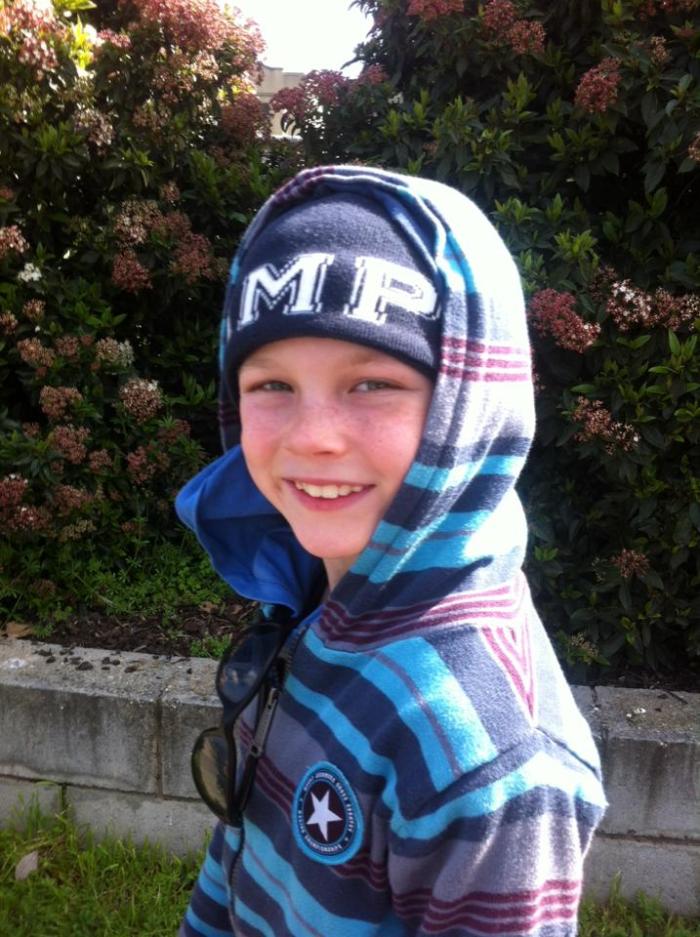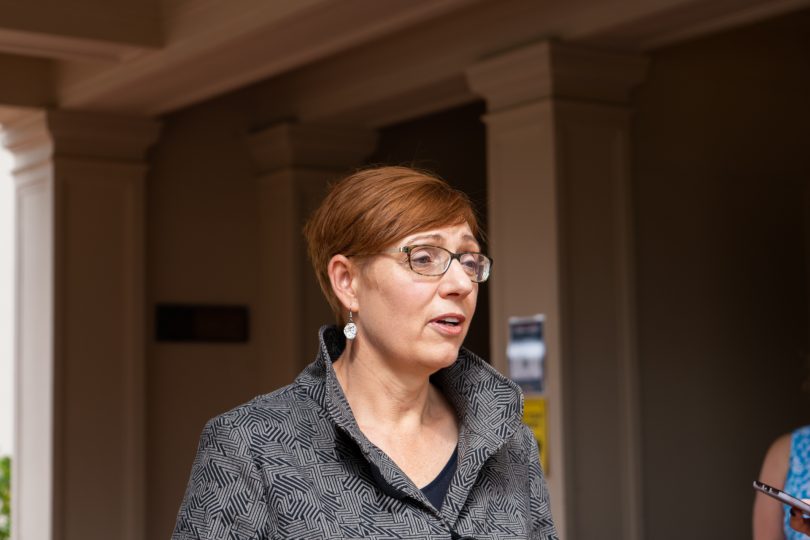
Bradyn Dillon tragically died at the hands of his father in February 2016. Photo: Rachel Jones via Jakob’s Voice.
Canberra has been shocked to its core to learn about the brutal details of the murder of nine-year-old Bradyn Dillon in February 2016 at the hands of his father, Graham Dillon.
Five years after his murder, the Coroner handed down her report into the matter yesterday (29 April). She found missed opportunities for intervention within the child protection framework that ultimately led to Bradyn falling through the cracks.
But experts have warned that the horrific circumstances that led to Bradyn Dillon’s death could still happen if urgent changes are not made to the child protection sector.
Principal Solicitor at the Women’s Legal Centre (WLC), Claudia Maclean, said inconsistencies about when child protection services become involved and between federal and local court systems could put vulnerable children at risk.
“We work with women who are often straddling two very different court systems, which cause great confusion and, at times, increased risk,” she said.
“On one hand, you have care and protection, and on the other, you have the family law system.”
Child care and protection are the responsibility of Child and Youth Protection Services (CYPS) in the ACT, a Territory agency in the Community Services Directorate (CSD).
In certain situations, and sometimes acting on advice from CYPS, a parent will act proactively to prevent their children from seeing the other parents out of fear for their safety.
However, proactive action can then be detrimental if legal proceedings are launched through a federal court like the Federal Circuit Court or Family Court. This is because the court has to make orders that are in children’s best interests and promote a meaningful relationship between both parents if it is safe to do so, Ms Maclean said.
“If a client is seen to be acting protectively, [CYPS] will step out as the child is in the care of a willing and able parent,” she said.
“If the court finds there is no risk, then the withholding parents may be seen as obstructionist, which is detrimental to their case.
“Risk is also very difficult to prove in cases where there is no ‘external’ evidence such as criminal charges and mandatory reports from other services.”
It is similar to the circumstances that contributed to Bradyn’s death.

The home in which Bradyn Dillon was murdered in February 2016. Photo: File.
The Coroner described Bradyn’s father as a “master manipulator” who lied extensively. As a result, CYPS caseworkers assumed the information he gave them was accurate, including that he had custody of his son and his bruises were from falling off his bike.
No investigation was conducted following reports by teachers in August 2015, and too much reliance was placed on previous reports where the outcome was “no concerns and no further action”, the Coroner said.
The last report was made six months before his death, but none met the “threshold test” and were closed.
Ms Maclean said the inconsistent assessment of risk, which can be highly discretionary, can result in people without specialist training being manipulated by a cunning perpetrator – like Bradyn’s murderer, Graham Dillon.
“In the ACT, we do not have a shared risk assessment tool among our first responders, including Care and Protection, police, the courts and DV support services,” she said.
“Ultimately, the issue of risk is highly discretionary and depends upon the specialist knowledge, training and expertise of the person making that assessment.
“There needs to be greater skill and consistency in how matters are dealt with in the care and protection space and the family law space. This includes how children’s best interests and risk is assessed and how family violence presents itself if we want to minimise the chance of this horrific case happening again.”
This was in addition to the large volume of intake work for the CYPS, which was around 18,600 cases last year, leading the Coroner to note that “it would be extremely difficult to conduct thorough analysis with that number of cases coming through the door”.
The Coronial Inquest found that while numerous reports indicated Graham had abused Bradyn, none could be seen as a precursor to him killing his son.
Acknowledging the horrific circumstances that resulted in the inquest, Families and Community Services Minister Rachel Stephen-Smith said the government has put in place a range of measures since 2016 to avoid a tragic repeat, but there was still more to be done.
Reports about child concern have increased significantly since Bradyn’s death in early 2016, resulting in two additional frontline teams being stood up to address the increase, the Minister said.

Families and Community Services Minister Rachel Stephen-Smith said the government has put in place a range of measures since 2016 to avoid a tragic repeat. Photo: Dominic Giannini.. Photo: Dominic Giannini.
Legislative reform is also on the horizon after a Legislative Assembly inquiry into Child and Youth Protection Services in 2020.
The Assembly inquiry made 44 recommendations. Almost half made direct reference to the ACT’s Children and Young People Act 2008 or the ‘best interest test’ outlined in the Act.
Changes have been made and homicides, including deaths from domestic and family violence, remain low. ACT Policing could only point to two incidents, the murder-suicide of two children by their mother in a Bonner house fire in 2018 and the attempted murder of two children by their mother, also by housefire, in Bonython in July 2019.
No other parent has been charged with the murder of their children since then, ACT Policing said.
But, as Ms Maclean said, the cracks are still there. And when someone falls through – as Bradyn did – they tend to land hard.
If this story has brought up any issues, you can call the 24-hour national sexual assault, family and domestic violence counselling line 1800 Respect on 1800 737 732.














